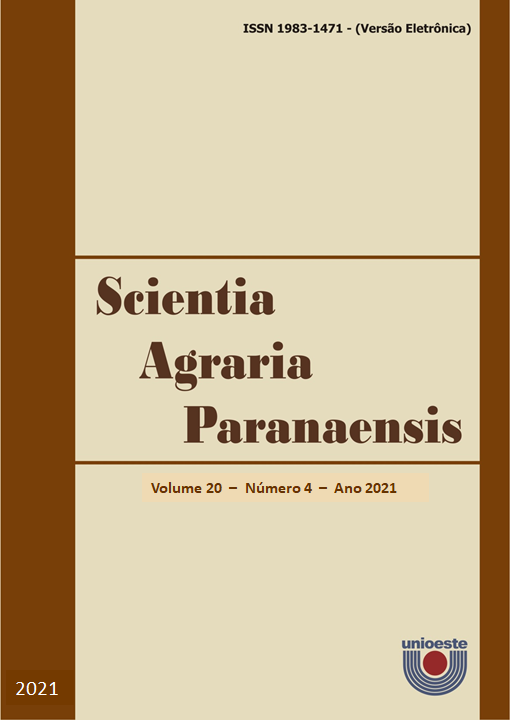Strawberry cultivars fruit production and postharvest from two types of saplings
DOI:
https://doi.org/10.18188/sap.v20i4.28268Abstract
The establishment of strawberry crops in southern Brazil is conditioned on the delivery of bare-root saplings imported from Argentina and/or Chile. An alternative to reduce dependence on the acquisition of these saplings is their replacement by clod-rooted saplings that form a clod. However, information on the agronomic performance of clod-rooted saplings is scarce. The aim of this work was to investigate whether the association between types of saplings and strawberry cultivars alters fruit production and postharvest. The treatments were three cultivars (Fronteras, Monterey and Portola) and two types of saplings (bare-root and rooted in a clod), arranged in a randomized block design, with three replications. The productive potential and chemical quality of fruits were evaluated. Plants from saplings rooted in clods showed higher number and fruit production. Plants from bare -root saplings produced larger fruits. The postharvest of fruits was not altered by the treatments. It is concluded that the productive potential and postharvest of fruits of strawberry cultivars is not associated with the types of saplings studied. Regardless of the cultivar, plants from saplings rooted in clods are more productive. The three cultivars tested, of saplings with bare-roots or rooted in clods, present a balanced relationship between sugar and acidity, giving the desired flavor to the fruits in their postharvest period.
Downloads
Published
How to Cite
Issue
Section
License
Aviso de Direito Autoral Creative Commons
Política para Periódicos de Acesso Livre
Autores que publicam nesta revista concordam com os seguintes termos:
1. Autores mantém os direitos autorais e concedem à revista o direito de primeira publicação, com o trabalho simultaneamente licenciado sob a Licença Creative Commons Attribution que permite o compartilhamento do trabalho com reconhecimento da autoria e publicação inicial nesta revista.2. Autores têm autorização para assumir contratos adicionais separadamente, para distribuição não-exclusiva da versão do trabalho publicada nesta revista (ex.: publicar em repositório institucional ou como capítulo de livro), com reconhecimento de autoria e publicação inicial nesta revista.
3. Autores têm permissão e são estimulados a publicar e distribuir seu trabalho online (ex.: em repositórios institucionais ou na sua página pessoal) a qualquer ponto antes ou durante o processo editorial, já que isso pode gerar alterações produtivas, bem como aumentar o impacto e a citação do trabalho publicado (Veja O Efeito do Acesso Livre).
Licença Creative Commons
Esta obra está licenciada com uma Licença Creative Commons Atribuição-NãoComercial-CompartilhaIgual 4.0 Internacional, o que permite compartilhar, copiar, distribuir, exibir, reproduzir, a totalidade ou partes desde que não tenha objetivo comercial e sejam citados os autores e a fonte.


